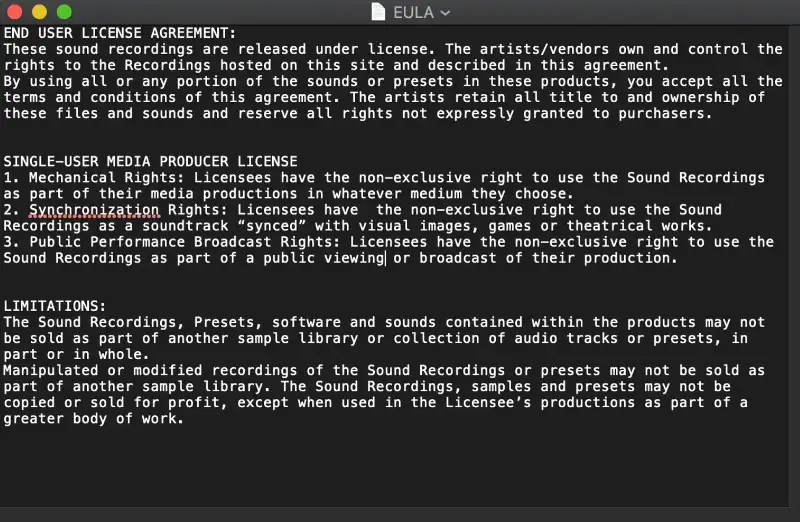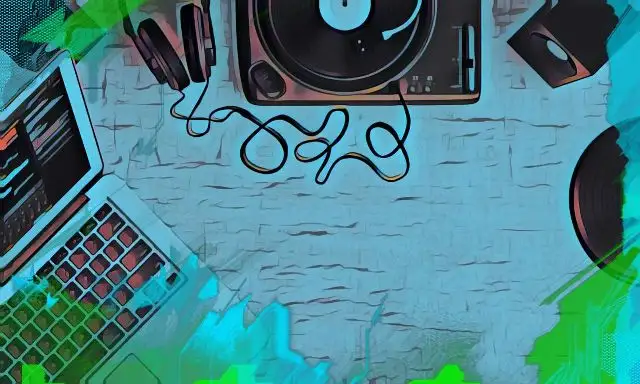If you have original sounds you use in your productions that you feel other producers might like, you might consider creating your own sample pack.
However, curating a well-organized and high-selling sample pack isn't as easy as throwing a bunch of sounds in a folder and uploading it to your site.
In this guide, we’ll take you through a step-by-step approach to creating a fresh and professional sample pack, so you can begin making money online.
How To Make A Sample Pack in 10 Steps
#1 Set Your Goals
Before you dive into the creative process and start designing sounds and samples, make sure you have a foolproof plan in mind. It's always nice when the music-making process is productive, and by having a direct path and clear goals, you can make it so.
When creating your first sample pack, it's better to start off with a smaller batch of samples. While the old Vengeance sample packs with thousands upon thousands of samples may have been successful, the team had been working on the art form for a long time.
When you're just getting your feet wet, quality over quantity is best.
Once you have a good idea of the number of samples you want to put in your pack, consider how much time you want to spend making it. Test out your chops and see how many samples you can make in a day. Then see how you can translate that workflow into your timeline and see what makes sense.
Lastly, you want to ask yourself what types of sounds and samples you're looking to create.
The possibilities here are endless.
There are instrument-specific sample packs, such as drums, strings, horns, and vocals. There are also genre-specific packs, such as trap, folk, jazz, and boom-bap. You may even go for a sample pack that is super niche, such as a tiki-themed sci-fi effects pack.
Whatever your sample pack choice is, begin setting up your folders so that they correlate with your sound choices.
No matter what kind of pack you're creating, make sure the folder structure is organized. Keep your sample formats cohesive, file names clear, loops and one-shots arranged by musical key or BPM, and more.
#2 Make a Stylistic Choice
When making a sample pack, it's better to have a restrictive mindset and stick to your original stylistic choice so you can target the right audience. With such a saturated market, there's no room for generic or ultra-general sample packs anymore.
Get in touch with the genre or subgenre that you're creating your samples, so you can get a better idea of how to characterize your sounds.
#3 Name Your Pack
I often find that coming up with a name helps give me direction when creating sample packs. The words or phrases you use in your sample pack title should reflect how it sounds. Not only do you want the title to describe what buyers will find inside, but it should also be catchy enough to stand out from the crowd.
One of the most successful sample packs on Splice today is “ DECAP - Drums That Knock.”
In the title, you get the name of the sample maker and a catchy phrase that tells you exactly what you can find inside. The idea here is to keep the language descriptive and the title short.
#4 Understand Copyrights
By all means, do not use copyrighted sounds to make your own samples.
There are very few cases where even layering other samples to make your own is allowed.
With that said, some sample pack producers, such as Zero-G, allow their samples to be used in different packs if they are given a new musical context.

All of the same rules apply to sample-based instruments or VSTs. You can't strip a snare from Native Instruments Battery 4, for example, and call it your own. If you’re unsure whether or not you can use other samples you have in your pack, check out the EULA (end-user-license-agreement) document that likely came with it.
#5 Be Contextual
Trying to come up with hundreds of different one-shot samples without any context can be pretty difficult, which is why I always recommend laying down a ton of material or loops and dissecting them later down the line to retrieve individual sample elements.
Not only does this give you more bang for your buck, but you're also making sure that each sample you create sounds good in a musical context. Plus, it's so much more exciting to make music and pull bits and pieces from it than make a bunch of individual sounds.
PRO TIP - If you already have a track made, you can go through it and start pulling out sounds, as long as they are completely original.
#6 Export in High-Quality Format
For the love of the producer gods, do NOT export your samples as MP3s.
Great sample packs utilize high-quality file formats. One of the most popular and accepted audio formats for sample packs is WAV. Not only is WAV one of the highest-quality uncompressed audio formats you can use, but it is also compatible with just about any DAW.
As for the sample rate and bit depth, 44.1 kHz/24-bit is a good place to start.
Whether you want to export them in stereo or mono is up to you.
Note that some sample pack producers will also export in AIFF, and though it is the same quality as WAV, it's not as versatile, so I wouldn't recommend it.
Having short fades on all your one-shots and loops is one of the most important industry standards to adhere to as well.
#7 Get Your Artwork Together
Now comes the other fun - making artwork for your sample pack.
The best sample packs come with instantly recognizable artwork. For example, the team from That Sound has artwork for their sample packs that is cohesive and professional, as well as easily recognizable from a mile away.
The important thing here is that the graphics match the title and theme you've chosen. While you can definitely take advantage of free software editors online, I recommend hiring a professional graphic designer if you don't have the skills and want to get serious.
#8 Create an Audio Preview
To showcase the sounds for potential buyers before they download your sample pack, it's best to give them an audio preview.
While you can take the simple approach of creating an audio preview with your loops and samples playing one after another with crossfades and no other musical context, I often find that it's more appealing when an audio preview comes with a musical demo track.
If you're creating a trap drum sample pack, for example, you might want to whip up a simple trap beat using your samples.
#9 Draft Up a License Agreement
Remember that license agreement that we talked about earlier?
Now it's time to create your own.
This is pretty much the last step in the sample pack creation process. Your EULA should specify that all of the samples in the pack are licensed, not for sale. Essentially, you are telling the customer that they are more than allowed to use your samples in their projects, though they do not own the copyrights to them.
Your license agreement should also state that your samples are not for resale and should not be shared.
Lastly, clarify whether it is a royalty-free sample pack or if users must pay royalties to you when your samples are used.
#10 Distribute It
Ready to make some money off of all your hard work?
That's where distribution comes in.
The question of where you want your sample packs will be sold is completely up to you. Most producers will choose between one of two options - distributing their samples on their own or going through a distributor.
While you can make more money distributing a sample pack by yourself, you'll also have to take care of all the hard work, from marketing to accounting. On the other hand, you could collaborate with a sample pack distributor that will take care of the business side of things. The major downside is that they will also take some of your earnings.
How much of your earnings they take will depend on the distributor, so make sure to consider different options.
Final Thoughts - Making Passive Income with Music Production
Modern-day music producers and sound designers are looking for more and more ways to create income from their music, and many of them overlook the art of creating sample packs.
A popular sample pack can be a long-term form of passive income and can get the word out there about your production skills. Even if you're someone who isn't seeking the limelight but loves producing music and wouldn't mind a bit of extra cash in their pocket, making sample packs is a wonderful way to enter the larger musical discussion.
So whether you want to make a sample pack for hip-hop music producers with hard-hitting 808 drum machine samples and subs or a natural post-production-style sample pack with textures and ambiances that can be used in film, you now have all of the knowledge to make a sample pack that is unique to you.





